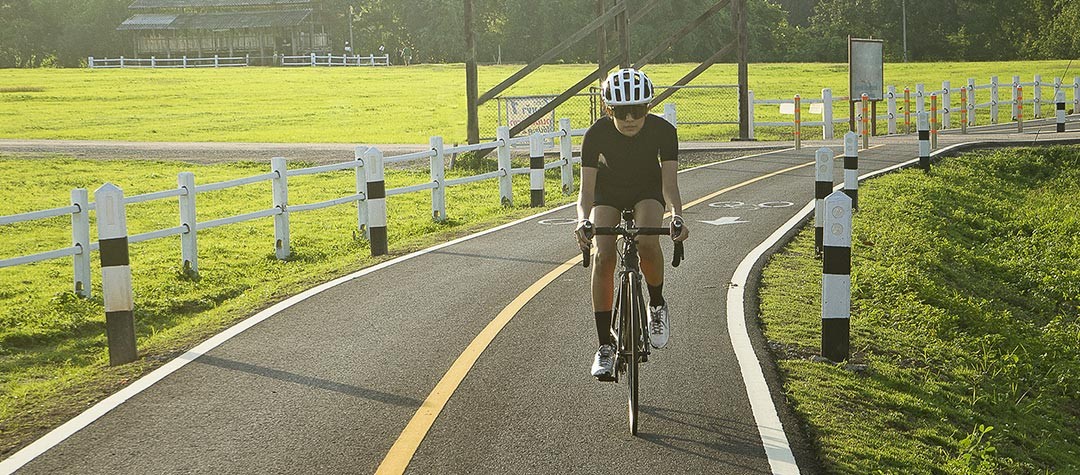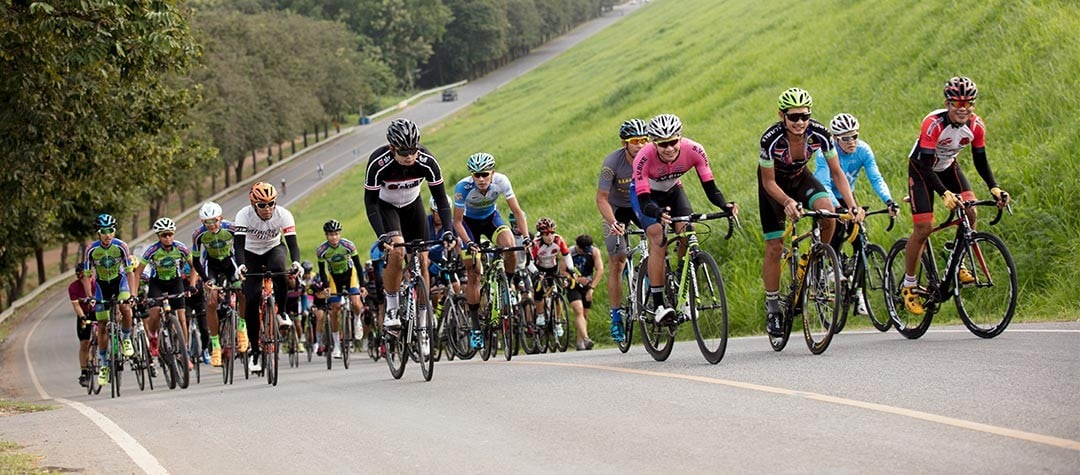Cycling etiquette is a still a topic of debate among cyclists, but there are still some generally accepted tips on how you should behave on the road.
This list of cycling dos and don’ts is not exhaustive but should keep you on the right side of your fellow riders. Not only will this knowledge of the rules of the road help keep you safer, it will also make your rides a much more pleasant experience. Here is your guide to cycling etiquette:
- Learn how to group ride . Anyone who rides with a group for the first time will tell you that it is quite a different experience to going solo. You really should make the effort to learn the basics of how to group ride that everyone is working together and working from the same set of rules. There will usually be no shortage of people willing to tell you where you are going wrong!
- Don’t do anything unpredictable . Riding in a group requires you to think about others around you and the consequences of what you do. Your random movement could cause a chain reaction meaning that others behind you come unstuck. Ideally you should maintain your line with constant speed and not weave around.
- Don’t overlap wheels . Edging in front the rider’s back wheel (or ‘half wheeling’ as it is known) is a way of putting both of you (and potentially many others) at risk. If the person you are overlapping moves out, perhaps because of a pothole, then chances are you are both going to end up on the floor. Best position is to be behind, directly alongside or in front of someone, but never overlapping.
- Ride compact. The group is most effective when everyone is riding compact together with gaps kept to a minimum. The larger the gaps that open, the harder it is for those riding, and the more difficult it is to close up the gap. As a note of caution though, only ride in proximity according to your skill and confidence level.
- Take turns at the front . Don’t be the rider that let’s everyone else do the hard work at the front for the entire ride. Make sure you take your turn at the front, unless you are a much weaker rider and are struggling. When hitting the front for your turn make sure you keep the pace constant and don’t allow it to drop.
- Ride with the group matching your ability . Some clubs will have multiple groups of differing abilities. It is better to ride with the group most suited to your ability so you don’t hold back a strong group of riders. Sometimes a choice isn’t always available at which point the group should generally ride at the level suited to the slowest in the group. ‘No one gets left behind’ is the mantra of many clubs!
- Ride two abreast. This is always a contentious one, but it is generally safer to ride two abreast in order that vehicles don’t try and squeeze past when there really isn’t a safe space to pass thus forcing you into the side. Of course, you shouldn’t cause an unnecessary obstruction and should be prepared to go single file if you are causing a hold-up. By no means are we suggesting you always have to defer to motorists, but a bit of commonsense and courtesy is required here.
- Change gear in good time . When approaching a climb anticipate the gradient and change gear well in advance. There’s nothing more frustrating than being behind a rider who is crunching through the gears, especially when it brings you almost to a standstill and you then have to try and gain momentum once again.
- Do not react to motorists. As much as you might feel the need to gesture or shout at motorists when they show some rank bad driving, it’s not going to help you. A road rage motorist has one advantage that you just don’t have, namely a motorised and potentially lethal vehicle.
- Don't draft without permission . If you are riding solo and then you happen to latch onto a rider who is doing all the work into a headwind, don’t just sit on their tail and get a free ride. If you want to draft behind someone else’s wheel, at least do the decent thing and ask, or at least offer to take turns.
- Look after newbies . Every rider was a beginner once. Don’t spend your time tutting and head-shaking at wrong moves by a newbie, but instead explain to them the finer points of riding and where they are going wrong. The more you help them the quicker they will get up to speed and become a seamless part of your group.
- Be nice to fellow cyclists. It is almost customary to give fellow riders a wave or nod when passing. In addition, if you see rider at the roadside in difficulty, then ask if they are ok and have everything they need to sort the problem. A spare tube might just be you good deed for the day.
- Be nice to other road users. Acknowledge other road users, especially motorists who may slow down and stop or allow you to pass when they see you or your group approaching. As a rule, don’t wave through a vehicle that is waiting to overtake as this will avoid the risk of being held responsible if the overtaking results in an accident.
- Warning calls . When riding in a group be sure to use the correct warning calls to highlight a potential hazard, especially useful for riders towards the back who can’t see what is coming, but remember only to shout when it’s necessary. Also remember to pass the warning down the line especially if it’s a big group.
The common calls are summarised as follows:
| Call | Meaning |
| “Car up” or "Car back" | A vehicle is approaching the group from behind. |
| “Car ahead” or "Car front" | A vehicle is approaching the group from the front. |
| “Single out” or “Single file” | A call from riders at the back of the group to alert the other riders of the need to get into a single line in order to allow vehicles to pass. The riders on the outside will usually drop back behind the rider on their inside. |
| “Clear” | When approaching a junction, this call let’s riders know that the junction is clear of traffic. Each rider passing the junction should shout “clear” in order to let those behind know that the junction is still clear. |
| “Car left” or “Car right” | These highlight to riders when vehicle is approaching the junction from either the left or right. |
| “Hole” | Indicates when there is a pothole so that the following riders can avoid it. |
| “On the Left/Right” | A general warning to let you know there is a hazard, usually a parked car or pedestrians. This is often accompanied by the rider putting their hand behind their back and pointing in the direction away from the hazard. |
| “Stopping” or “Slowing” | A call to let riders behind know when you are stopping or slowing down. When stopping this is often used in conjunction with an arm out showing the palm to the rider behind with fingers pointing down. When slowing, riders will often make a ‘flapping’ motion with their hand at their side. |
| "Ease up” | A shout to let the other riders know if you are unable to keep up with the pace or have a problem. The instruction should be passed along the group to the front so they are aware of a problem. |















